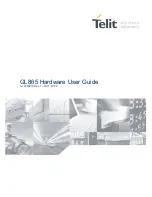
Incoming
request
Read access
Initiator can write
into this region
Initiator can read
from this region
Request has
correct MReqInfo
pattern for this
region
No
Yes
Initiator ID
Yes
Yes
Access
denied
No
No
No
Decode protection
region-
address/address
space
Access granted
Yes
ADDR_MATCH
registers
RD_PERMISSION
register for region
Initiator ID
WR_PERMISSION
register for region
Request MReqInfo signals
REQ_INFO_PERMISSION
register for region
Request signals
Registers from the
PM block
?
?
?
?
intc-014
Public Version
www.ti.com
L3 Interconnect
Figure 9-3. Flow Chart of the Protection Mechanism
To summarize, firewalls accept or reject a request depending on the following:
•
Initiator originating the request
•
Command (read or write) requested
•
MReqInfo bus state
•
Region access in the target memory space
Software must configure the L3 firewalls properly to allow the right initiators, with the right MReqInfo
access, on the well-defined size region. All the registers relative to the L3 firewalls are grouped in the
protection mechanism (PM) register block.
NOTE:
The PM qualifies the protection mechanism register associated with a firewall target. The
targets protected by a firewall are listed in
. These PM registers do not exist if no
firewall is associated with the target.
9.2.3.3.1 Protection Region
Two types of regions are distinguished in a target firewall (see
):
•
Default region: Available in all targets; spans the entire target address range
•
Normal region: Number varies in a target; they have identical capabilities
Each region has the following characteristics:
•
A base address, relative to the target address itself, and an address space
2005
SWPU177N – December 2009 – Revised November 2010
Interconnect
Copyright © 2009–2010, Texas Instruments Incorporated
















































